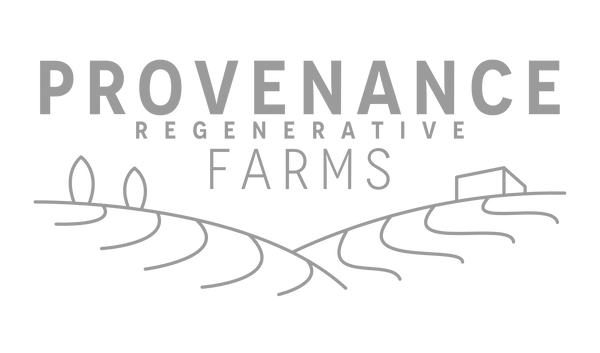
We're Trying to Quadruple the Water On Our Farm. Here's How.
Share
"Good soil can hold 20x its weight in water!"
I didn't believe it.
Couldn't stop myself from digging in. So I've just spent 36 hours parsing a few dozen journal articles (dating back over 100 years) to figure out if this was true..
We knew this was a goal for this regenerative farm project, so we took 16 soil core samples off our farm last year to baseline these numbers, before we really did anything to improve it.

Can you increase the water in your soil? If so, how??
The claim that soil could hold 20x its weight in water never sat well well me, but I hadn't made time to really look into it. In order to wrap my head around how that claim could be true I gave myself a mini crash-course in soil chemistry, biology, physics, and hydrology. Basically I found out that indeed that 20x claim is just a bit too good to be true.
After digesting numerous articles, found this gem published in 2018 (Z. Libohova et. al.)(1)
There's been an 'overestimation' of water storage capacity! There are definitely positive relationships between the increase in soil organic matter and water holding capacity of the soil, but the relationship is not linear, nor is it only driven by SOM%. Soil type, composition of the clay type, and other variables all affect the Available Water Holding Capacity (AWHC) of the field.

Here's a great graphic from that article arguing that if indeed 20x was true, the soil volume would grow over 4x! Physically not possible, and so these 20x proclamations don't pass a simple back of the envelope test.
Based on both empirical and theoretical models, it does seems like improved water storage can be finessed into our soil, but there are diminishing returns as Organic Matter % increases. It makes sense it's not a linear relationship.
Still, their model predicts 1.5x - 1.7x improvement for every 1% increase in soil organic matter % from 0% up to 8%, with the most improvement in the first 4-5 %.
Seems doable, let's try!
When I match up our soil type and OM% starting point, we seem to fit the average case for the model to be predictive to my satisfaction.
In other words, improving our soil is definitely worth trying because there's a non-zero chance we'll see some pretty incredible results.
Still I think I can do even better, in fact using their model I think I can get to over 4x improvement. I'm not just going to increase the Organic Matter % of the existing shallow top soil, I'm also going to increase the top soil depth. Their model was based on 15cm.. I'm going to shoot for 100cm.
Assuming you're wondering how I intend to accomplish these incredible feats, the answer is rotational pasture management and subsoiling along a keyline design. (I'll unpack both in future posts).
With the data we got from our core samples, our avg top soil depth is roughly 20 cm. Here's some pictures of what that looks like. We sent these off to have a lab calculate our baseline OM%, among other things.



Running the numbers, and based on increasing our SOM from 3% to 8%, I think we can 1.5x our current Water Holding Capacity (AWHC).
Then by 5x'ing our soil depth to 100cm, I think we 4.3x our AWHC over current.
Give me context! How much water is that in terms of monthly rainfall?
In terms of monthly rainfall, we go from storing 19% to 83%! Think about that in terms of drought or flood protection.
That's resiliency right there. Worth it for us.
Okay, Fine.. But Does This Scale?
All fine and dandy for our little farm, but would it scale to millions of acres?
Likely not the soil depth, but increasing the OM% is definitely doable, and is being accomplished by others like Gabe Brown.
Bonus points for Gabe; he's improved his soil quality so much that he's eliminated all synthetic fertilizers from his operation and yields the exact same as when he fertilized.
His yields are 25% higher than the county average. Are his yields the highest in his county? No. Is he the most profitable? Yes.
So it's clear to me we have to give this a shot.
To the extent we can de-risk this endeavor for others, we're collecting and publishing our data as we go.
(1) Libohova, Z., Seybold, C., Wysocki, D., Wills, S., Schoeneberger, P., Williams, C., Lindbo, D., Stott, D., & Owens, P. R. (2018). Reevaluating the effects of soil organic matter and other properties on available water-holding capacity using the National Cooperative Soil Survey Characterization Database. Journal of Soil and Water Conservation, 73(4), 411–421. https://doi.org/10.2489/jswc.73.4.411
